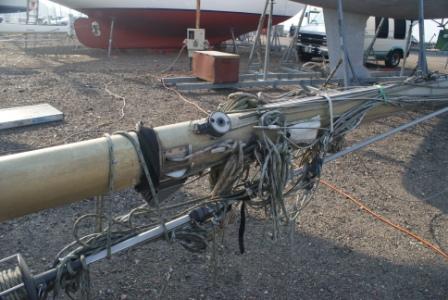This post appeared originally on Windborne in Puget Sound
 |
| The old standby. |
Everybody knows Brasso, right? That stinky stuff that you can use to almost magically return corroded copper, brass or bronze to a mirror finish... you know. The chemical engineer in me wants you to know that the stinky part is really an important part of the magic. See, there is this thing called the copper-ammonium complex; it makes copper much,
much more soluble in water than it would be without the presence of the ammonium ion. It is this highly increased solubility which helps to remove the surface oxidation, in concert with the fine abrasives also present, and your elbow grease of course.
Well, recently the old can we had here on
Eolian finally ran out, and I was forced to buy another.
I wasn't really surprised when I found that it now comes in a plastic bottle instead of a steel can.
But I was sorely disappointed with what is now
inside the container. It seems to be far less effective, and the abrasive is considerably coarser than it used to be. It takes a lot more elbow grease, and due to the coarser abrasive the result is no longer a mirror finish. Like so many things, the
formula was changed - in 2008 - to make the product comply with the new U.S. volatile organic compounds law. More, it turns out that the version of Brasso sold in other countries is completely different than the current USA version.
So can any of you UK readers of this blog confirm that
this is the good old regular, highly effective, formula?
Does anybody have a can of the old stuff they would want to sell?








